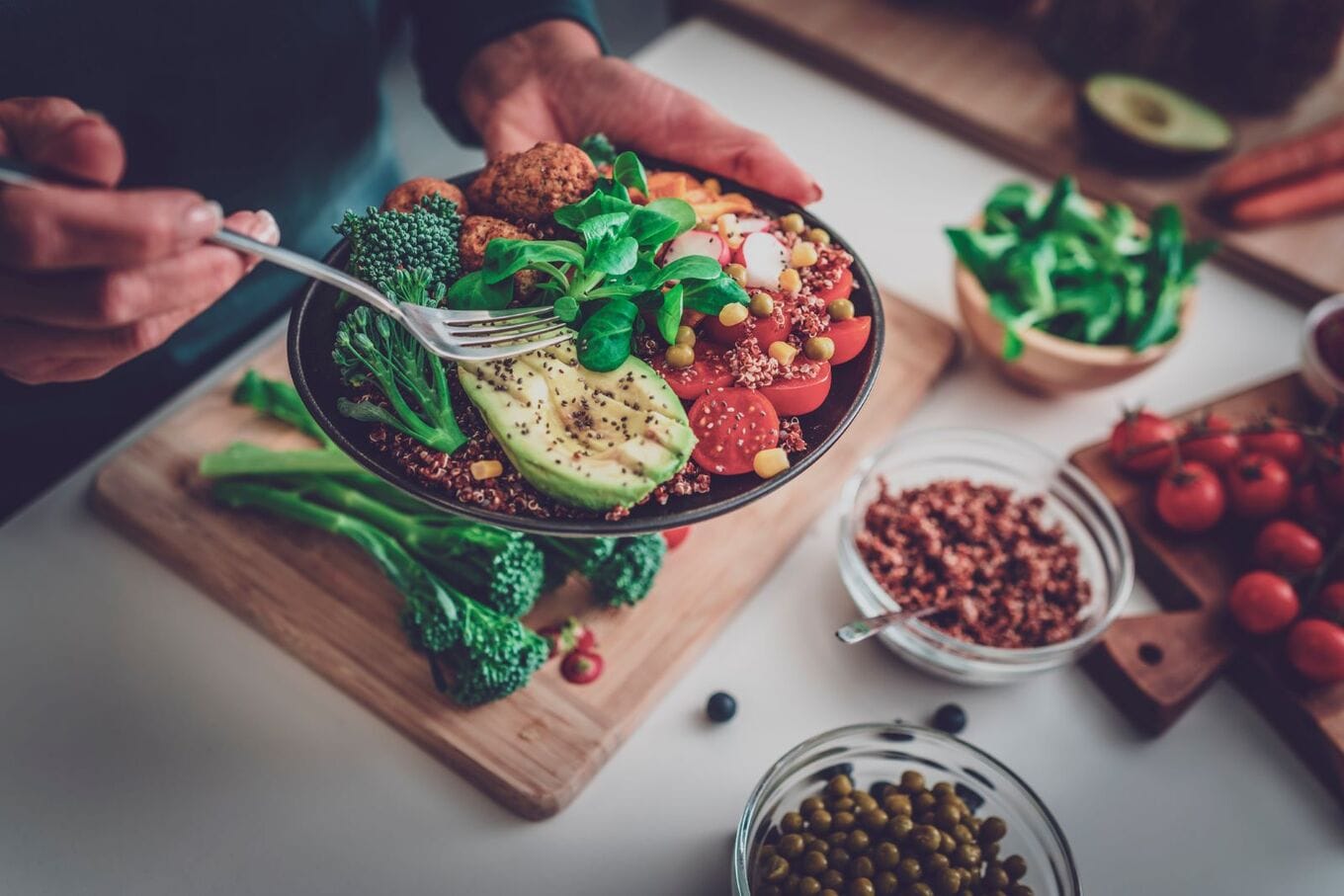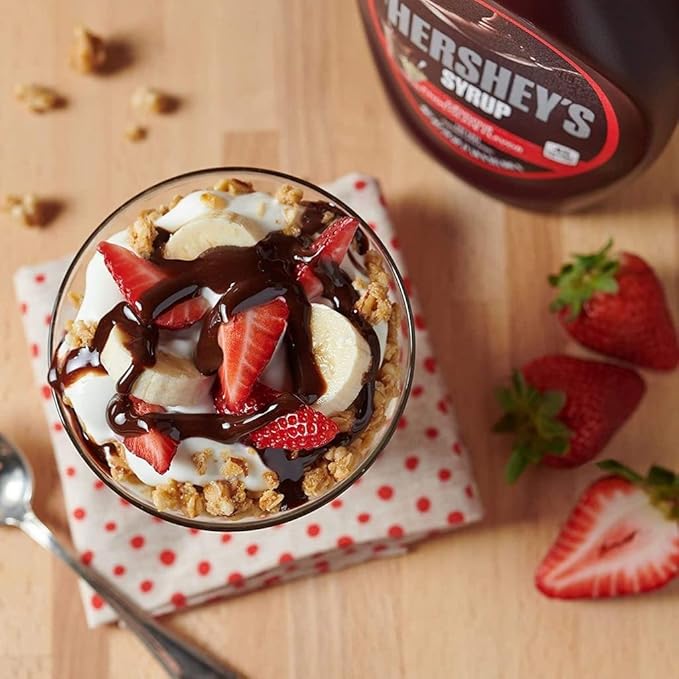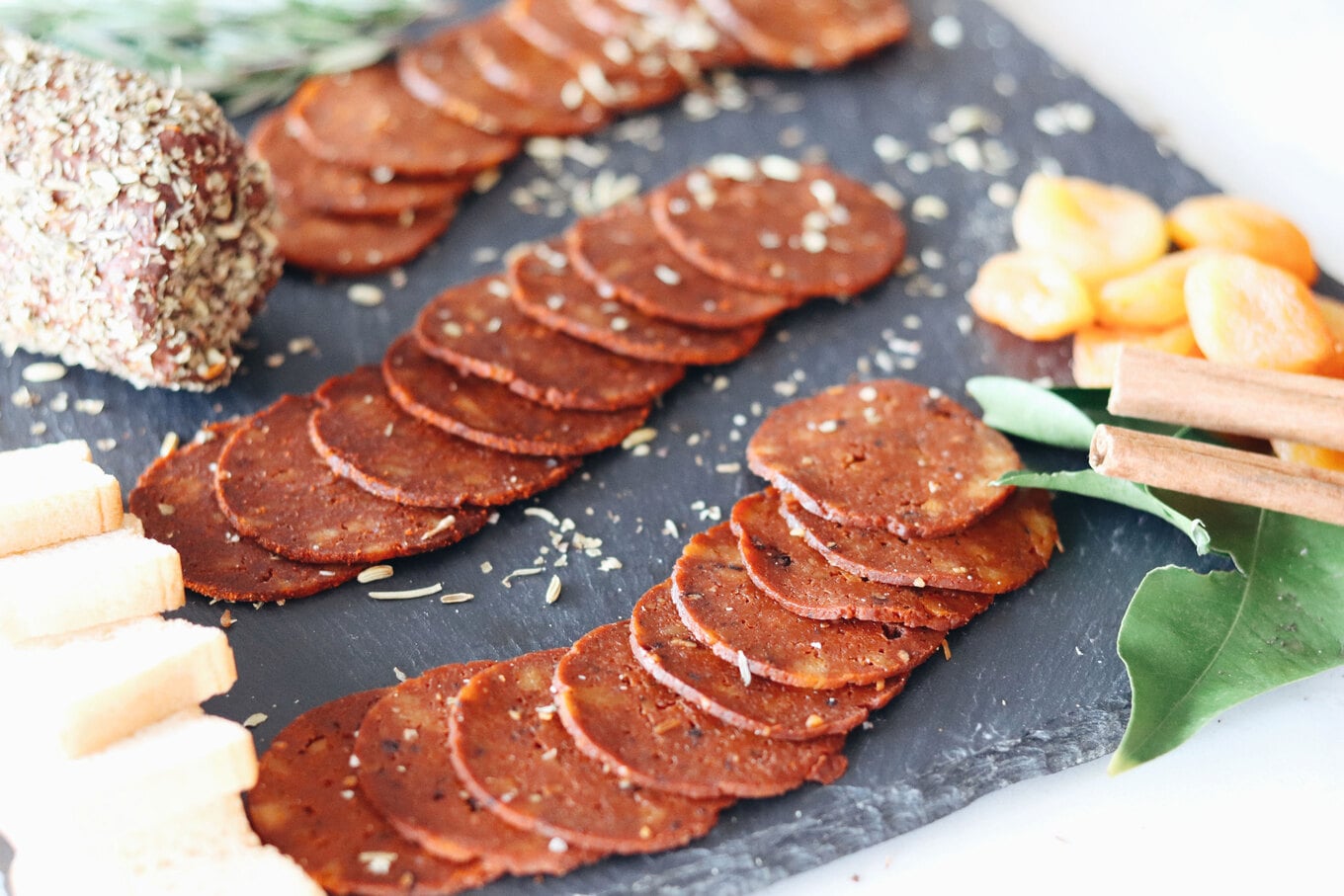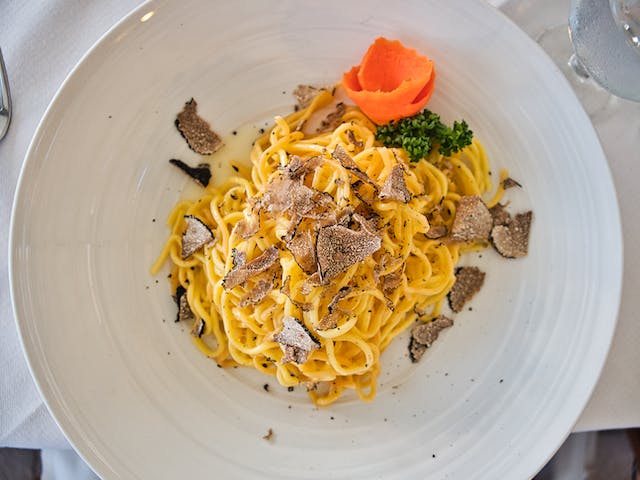Do you have that deep down drive to dine on your own homegrown vegetables but think your small studio apartment means you have to rely solely on store-bought produce? It really is possible to farm your own vegetables and herbs, even if you live in the middle of a big city. Simply follow these steps and you’ll be growing food in creative and surprisingly easy ways in no time.
Table of Contents
What are the benefits of homegrown food?
While there’s nothing wrong with store-bought herbs and vegetables, growing your own from home can offer you many benefits. For example, their nutrient density will be better, because when you consume them they’ll be as fresh as possible (the longer vegetables sit waiting around to be eaten, the lower their quality). Plus, they’ll be pesticide-free, too.
But gardening can also offer mental health benefits, even if it’s done in a very small outside area or indoors. According to the UK charity the Royal Horticultural Society, having more plants around has been linked with improved mood, productivity, and reduced stress.
Can growing your own food reduce your carbon footprint?
But aside from health, there’s also another major benefit to growing a few of your own vegetables: sustainability. This is because homegrown vegetables aren’t packaged in plastic and then flown or shipped thousands of miles around the world to get to your table. According to the European Commission, transportation is responsible for around 19 percent of all food industry emissions.
8 simple tips for growing your own food in the city
If you’re feeling inspired to reap the benefits of homegrown produce, but if you live in a built-up area, don’t worry! We’ve got 8 tips to help you with your city gardening journey.
1 Embrace the planting possibilities
Food will really grow anywhere as long as there are these three healthy elements: soil, sun, and water. So if you have a fire escape, a tiny deck, or even a windowsill, throw as many containers as you can out there and go for it. Containers can mean anything from newly purchased terracotta pots to old plastic paint buckets (make sure they are well-cleaned). It’s even possible to grow tomatoes straight out of soil bags on a rooftop—just make sure you poke holes in the bottoms of your containers for drainage. Indoor hydroponic gardening systems such as Lettuce Grow and AeroGarden have also become increasingly popular over the years and are making home gardening easier than ever.
2 Get down and earthy
Stock up on some high-quality vegan organic (“veganic”) soil. Since many organic soils contain manure or other animal products, you’ll want to be careful that yours is cruelty-free. Dr. Earth’s Vegetarian Potting Soil is made without animal products and is readily available online. Scope out an area that gets plenty of sunlight during peak hours—between 10 am and 2 pm—and remember to water your plants once daily (usually in the evening).
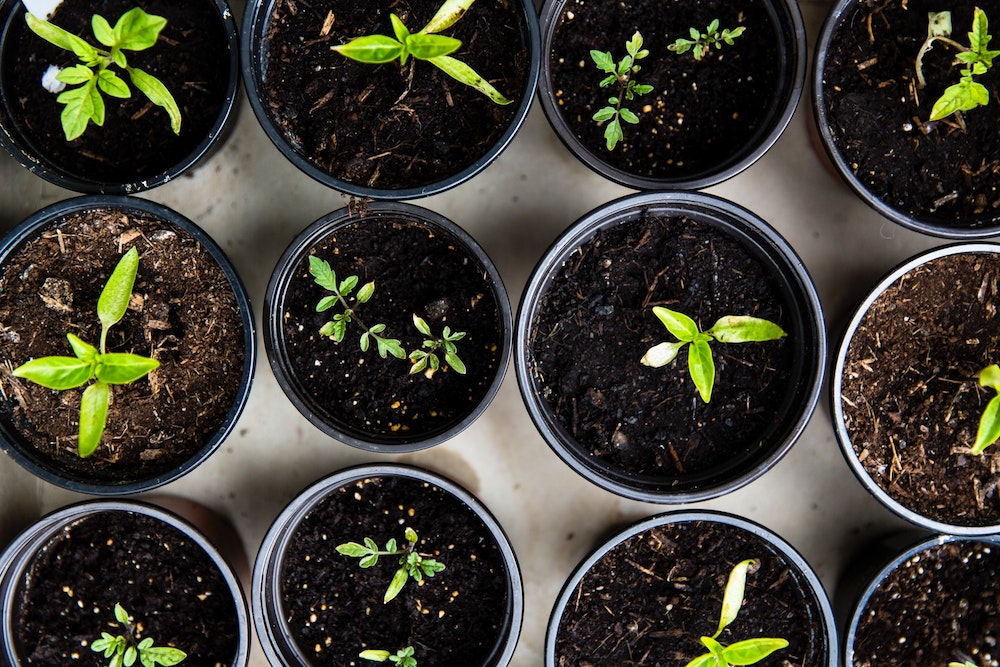 Markus Spiske/Unsplash
Markus Spiske/Unsplash
3 Plan your plants
Once all of that is in place, fill your containers with soil, leaving about an inch free at the top. Call your local nurseries to confirm which ones offer vegetable “starts” (seedlings that are ready to plant). Plant those starts in your containers by digging holes that go as deep as about one inch below the top leaves. Give the plants plenty of space to grow, which basically means using 1 or 2 starts per container, depending on the container size.
4 Make way for waste
Now that you’re a vegetable gardener, you’ll have more plant waste to compost, not to mention a good use for it when it’s ready. However, if you’re an urban gardener, you may not have space for a large compost bin. Kitchen-top compost containers are available online, but you can also research local composting pickup services in your area. If you don’t have your own compost bin, simply store your discarded vegetable peelings in a countertop container or in a bag in your freezer. In many larger cities, there are services that will pick up your scraps for a reasonable fee.
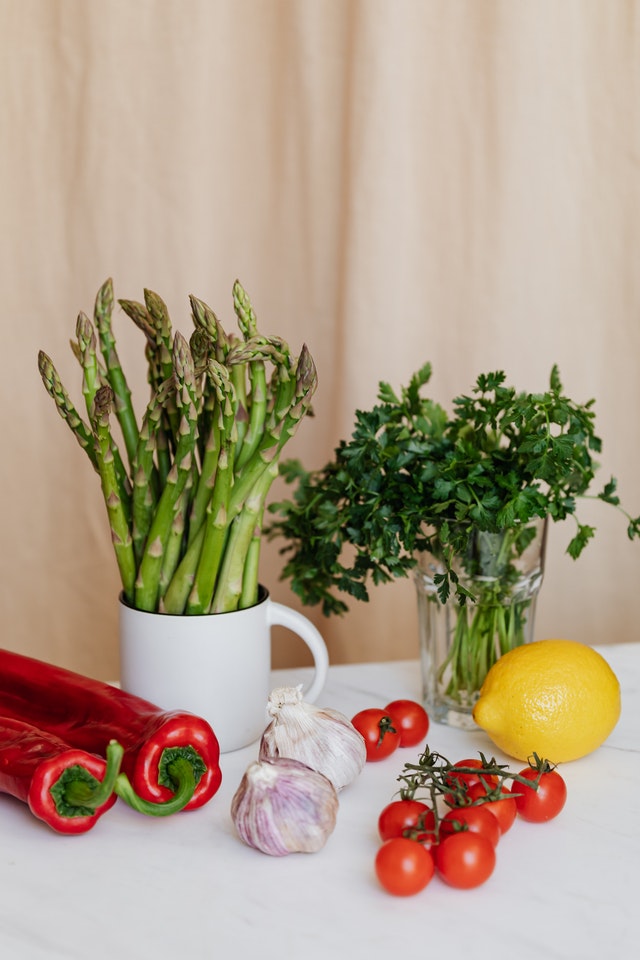 Karolina Grabowska/Pexels
Karolina Grabowska/Pexels
5 Be sure to mix it up
Insects and other tiny critters love to eat your vegetables as much as you do. To deter them as compassionately as possible, try companion planting—positioning different varieties of plants together. For example, basil and tomatoes are great to plant side by side, as are parsley and cilantro. Try to avoid planting just one crop in the same container; this will also help you have more of a variety of food in your seasonal harvest. If you’re growing on a window sill or fire escape, planting bee-friendly crops such as blackberries, cucumbers, peppers, squash, and wild garlic will help pollinate your fruits and veggies and even create a buzzing oasis.
6 Play with urban herbs
When planting in a small area, remember that herbs go a long way while still not taking up much space. Basil, parsley, thyme, and cilantro can season nearly any dish with serious flavor, without requiring nearly as much room as tomatoes or eggplant. With a few pots on your fire escape, you’ll be whipping up fresh vegan pesto and perfectly herbed tomato sauce in no time.
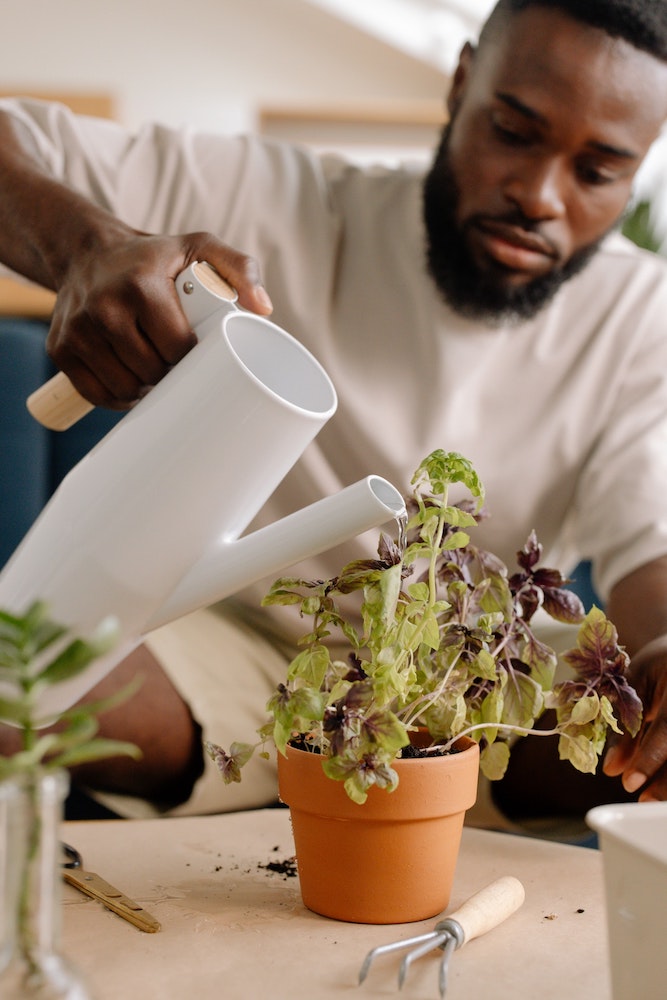 Pexels
Pexels
7 Listen to your plants
Vegetables may not have voices, but they will definitely tell you what they need. In the hottest summer months, check out your crops. Do they look droopy and dry? They are likely telling you to water twice daily. Or are they happy and flourishing, exclaiming that one watering a day is plenty. But be careful not to overwater! Yellow, brown, and wilting leaves on plants in damp soil may be a sign they are getting too much water. It’s all about trial and error, and even “experts” can’t read your plants as well as you can. So go spend some time with them and learn their language.
8 Let the sunshine in
Plants that are in too much shade will look thin, usually taking on a purplish tinge. Chase the sun and make sure they’re getting enough light. Container planting makes it easy to move them around. However, there is such a thing as too much sun! If your plants are on a fire escape, for example, heat may reflect off of the hot metal, especially in late summer. You can tell because your plants will quite literally look scalded. In that case, try to find some shade or bring your plants inside for some time out of the direct sun.
Liz Solms is an expert on organic farming and the owner of the sustainable agriculture business Banana Tree Consulting.
For vegan recipes to make with your harvest, read:
Here at VegNews, we live and breathe the vegan lifestyle, and only recommend products we feel make our lives amazing. Occasionally, articles may include shopping links where we might earn a small commission. In no way does this effect the editorial integrity of VegNews.

